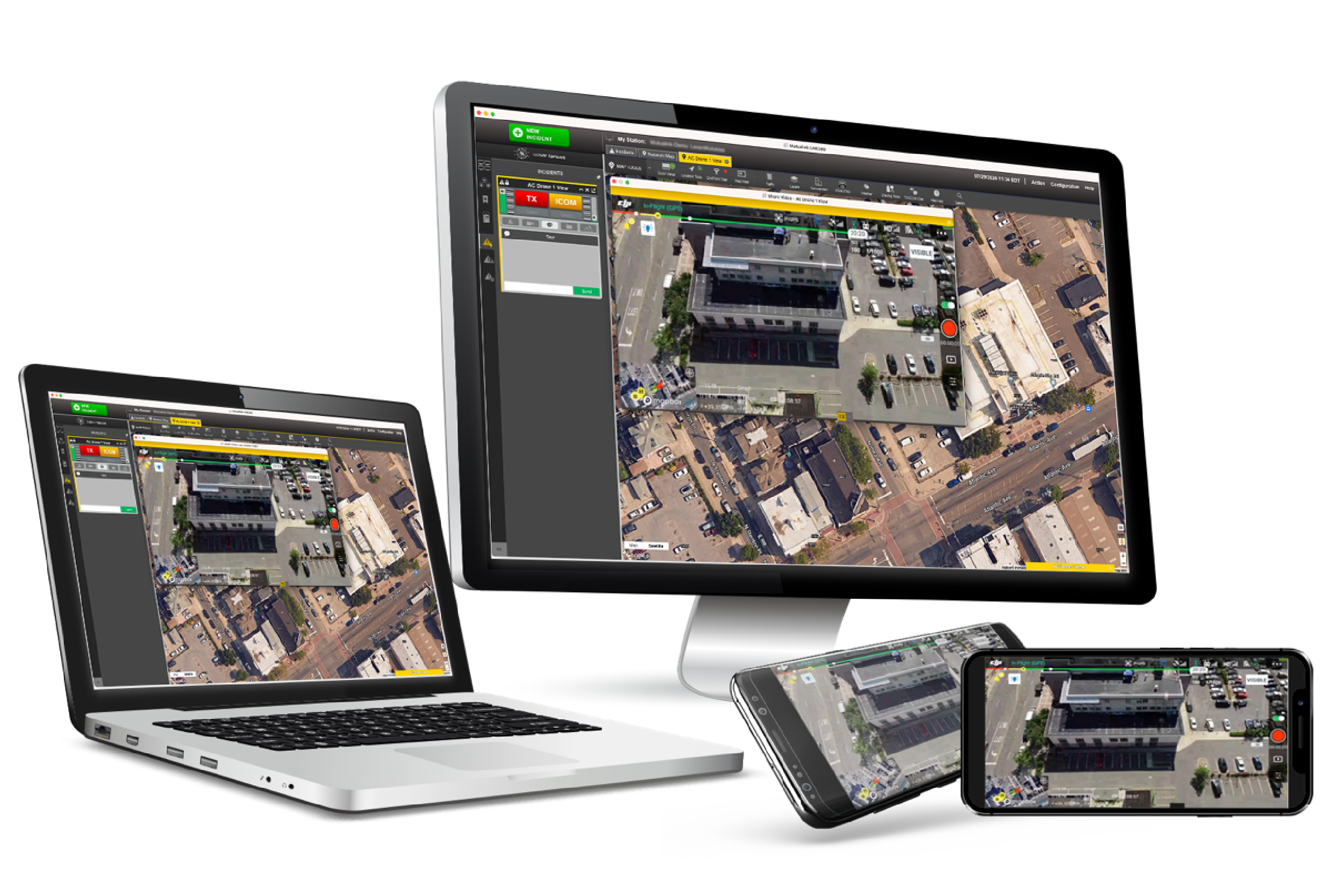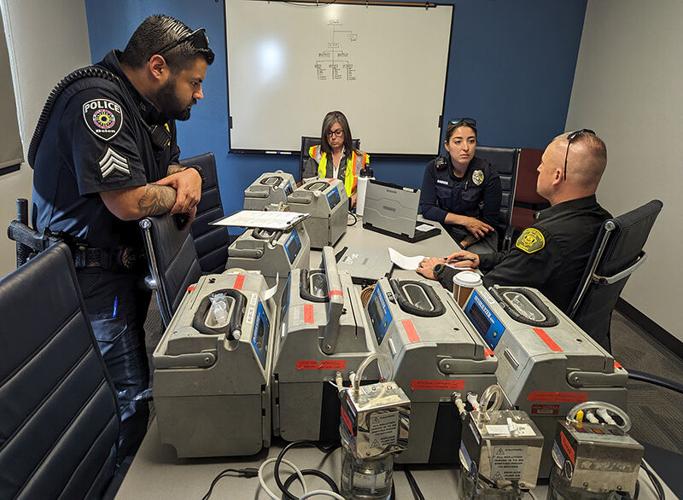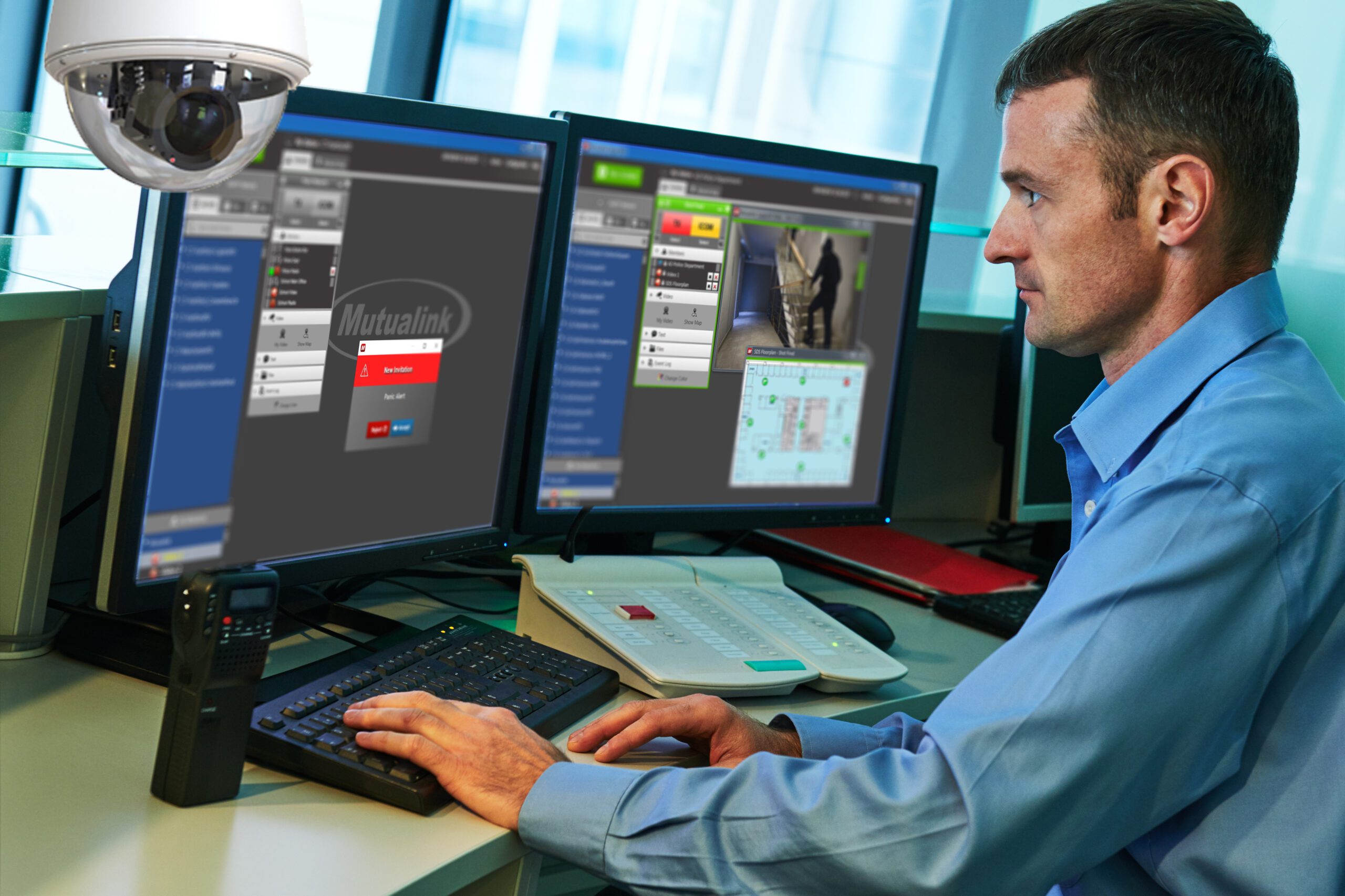By: Donny Jackson from Urgent Communications
Interoperable solutions provider Mutualink and three partners—PMC Associates, Oceus Networks and Hughes—next week will demonstrate their collaborative capabilities that are being deployed in the New Jersey public-safety LTE early-builder project.
Interoperable solutions provider Mutualink and three partners—PMC Associates, Oceus Networks and Hughes—next week will demonstrate their collaborative capabilities that are being deployed in the New Jersey public-safety LTE early-builder project.
Mutualink will show its interoperability capabilities on the show floor—the partnering companies are using combined space in booths 2236, 2238 and 2137 in the exhibit hall at the APCO show in Washington, D.C.—where a trailer with an LTE system on wheels (SOW) and a tactical node will be displayed, according to Mutualink CTO Joe Boucher.
“The system on wheels includes some Mutualink PTT gateway capability, and the tactical node contains additional PTT capability, as well as radio gateways and video gateways,” Boucher said during an interview with IWCE’s Urgent Communications. “Between the system on wheels and the tactical node, these units will be able to offer multimedia collaboration between on-scene agencies, even when there’s no backhaul present to the greater network at large.
“What this will allow is radio interoperability—I believe there are eight channels of radios included—as well as LTE-to-LMR capability, and the system will be radiating Band 14 in the booth. The tactical node and the devices present will have Band 14 capability, as well.”
While other early public-safety LTE buildouts utilize traditional fixed towers, the JerseyNet project is designed to provide FirstNet with insights regarding deployable LTE infrastructure like cells on wheels (COWs) and SOWs, which are COWs that include an evolved packet core (EPC), which is needed for today’s LTE system to function. New Jersey’s public-safety LTE network—scheduled to be completed by the end of next month—utilizes only deployable infrastructure, although many of the sites are expected to remain at one location.
With the SOW, Mutualink representatives will be able to conduct several demonstrations of collaboration and sharing, Boucher said.
“We’ll show video sharing, LMR sharing, situational-awareness sharing, etc., between participants both at the show and in the network at large,” he said. “That system also will be able to connect into our Mutualink IRAPP [Interoperable Response and Preparedness Platform] network, which is our nationwide network of public safety, critical infrastructure, schools, universities, private security, etc. They’ll be able to demonstrate multimedia interoperability from the show floor to any of those agencies.”
When such connectivity to an evolved packet core is not available, the Mutualink tactical node—”basically multimedia interop in a box that’s able to be wheeled into incident scenes and command centers”—can be used to enable on-scene communications in the manner envisioned by FirstNet’s Public Safety Advisory Committee (PSAC), Boucher said.
“Our model for our tactical node is actually not dependent on the presence of Band 14 or an EPC,” he said. “The tactical node is an on-scene unit that can provide this collaboration capability with an incident-area network. You could have wired connectivity, as well as a Wi-Fi bubble and some PTT-gateway functions.
“Effectively, it’s an incarnation of the MCU (mobile communications unit) that the PSAP has been asking for.”
Mutualink Chairman and CEO Mark Hatten said the company developed the tactical node from a previously existing product that has been altered to address the needs of future FirstNet users—a request that is becoming increasingly frequent in the market.
“This tactical node came about as a specific design for this New Jersey FirstNet opportunity, but it came from a product that we had been selling called the Go Kit,” Hatten said during an interview with IWCE’s Urgent Communications. “It’s very much the functionality of PTT voice, radio interop and video share from our Go Kit.
“We sell a fair amount of Go Kits every month, and the recent request has been, ‘Can we add a Band 14 modem into the Go kit?’ It looks a little different, but it basically does what the tactical node does. So, in the last bunch of Go kits that we’ve sold, every single one of them has added a Band 14 router. To me, that says, ‘I need to solve problems today, but I need to solve them with solutions that will be viable when Band 14 comes along.'”
With all of Mutualink’s work with state of New Jersey with deployable infrastructure, Boucher said it may be easy for some potential customers to believe that is the only use for the Mutualink interoperable platform. But that is not the case, he said.
“Because we have been very focused on the SOW, the tactical node and the deployable space, what a lot of people don’t realize is that Mutualink capability is actually more heavily deployed in fixed infrastructure,” Boucher said. “We have a very large fixed-infrastructure footprint.
“So, we’re bridging the fixed infrastructure world with the ad-hoc and tactical mobile worlds.”
About Mutualink
Mutualink, Inc. has developed an interoperable communications platform that enables community-wide multimedia sharing of radio, voice, text, video, data files and telephone communications in a secure environment. Mutualink’s system is currently deployed by hundreds of public and private entities worldwide, including homeland security and defense installations, NATO Special Operations Forces, police and fire departments, transit authorities, hospitals, schools, universities, shopping malls, casinos, and more. Mutualink is a privately-held company headquartered in Wallingford, Conn., with R&D facilities in Westford, Mass. and Mayagüez, Puerto Rico, and Defense Services office near Washington, DC. For more information please visit www.mutualink.net.
For More Information & Further Inquiry:
Beth Clay, Mutualink, Inc.
Phone: (203) 774-3474
Email: BClay@mutualink.net




